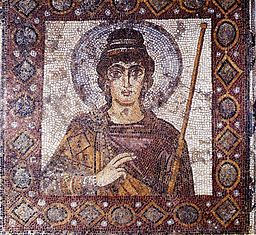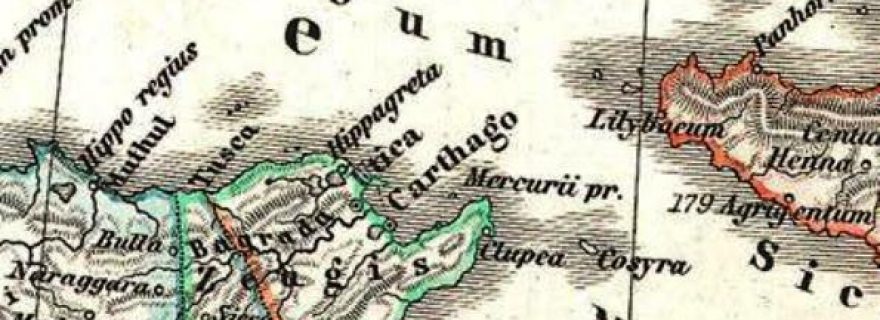Carthage: The image of a lost city
An exhibition always poses problems of representation. In the case of the lost city of Carthage: stereotypes and a lack of information. By its upcoming exhibition the National Museum of Antiquities seeks to shed new light on the Tunisian Unesco site.
In November 2014 the National Museum of Antiquities (Rijksmuseum van Oudheden) in Leiden, Netherlands, will open an exhibition on Carthage. This Phoenician city in Northern Tunisia dominated Mediterranean trade before the rise of the Roman empire. To the general museum visitor Carthage is primarily known for two things: First, it is the city where Hannibal was born, the famous Carthaginian military leader who threatened Rome during the Second Punic War (218-201 B.C.E). Second, the city was thoroughly destroyed by the Roman armies in 146 B.C.E.
These two well-known facts, however, are not the best basis for a reliable image of the city and its influence in pre-Roman times. It was a rich city that dominated trade for many centuries, with a multicultural population and a political organization that is nowadays seen as an example in modern Tunisia. In addition, Hannibal was indeed born in Carthage, but he hardly lived there. As a young boy he followed his father to Spain where his clan, the Barcids, built an empire of their own to control the silver mines. This ‘Barcid’ enterprise was not always supported enthusiastically by the authorities in Carthage itself, but that did not bother Hamilcar (Hannibal’s father) and his sons.
For an exhibition, however, this story is rather difficult to tell. There are hardly any objects, and seventeenth- and eighteenth-century prints and paintings always say more about the social-cultural context in which they were made than about Carthaginian society. They often have moralistic connotations and are historically very unreliable.

La Dame de Carthage mosaic, 6th century A.D. by Pradigue.
After the destruction of the city it was rebuilt by Emperor Augustus and
flourished again. In Christian times Augustinus lived and worked in Carthage.
The second issue, the destruction of Carthage by the Romans, is not a very good way either of representing a flourishing trade city. You cannot ‘bring life’ to something by describing its death. The destruction of Carthage in 146 B.C.E. has been described by several Greek and Roman authors (Polybius, one of the main sources, was a Greek) and as the subject for an exhibition it may be interesting for part of the public, but focusing on the destruction of a city does not offer the opportunity to show its growth and glorious past. We cannot give Carthage its value by showing its downfall.
So how do you tell the story of Carthage? I do not have clear answers yet. Part of it depends on the objects we can show in the exhibition. The procedures for loans have been started and there is a good chance we will be able to show a wide variety of material expressions from Carthage and surroundings. However, objects do not always (or hardly at all) speak for themselves and choices will have to be made in the multiple storylines we can choose from. That process is still ongoing. More in my next blog.



2 Comments
Really great blog Pieter and an interesting problem. At the risk of being seen as self-promotional, I invite you to look at the response of Dutch artist and former Boijmans van Beuningen tour guide, Melvin Moti, to such a problem as historically resolved by yet another tour guide, Pavel Gubchevsky, during the siege of Leningrad. This excerpt is taken from the introduction to a book I co-authored with my friend and colleague, Mary Margaret Steedly, called Images That Move (SAR Press, 2013)
https://sarweb.org/media/files/sar_press_images_that_move.pdf
Thought-provoking blog. Facing the problem of how to represent, means making an inventory of the story intended to be told. Apparently - but this remains to be made more explicit -, it is a story that brings across Carthage as a bustling and able central place in the southern Mediterranean. I would oppose to any off-hand dismisssing of how 'death' cannot be a fundamental part of bringing forward 'life'. Reconstructing lived realities from funerary practices, for example, is core-business to archaeology. Surplus and the diversity of material culture associated with mortuary customs would certainly add to telling this particular story.
Also, maps are your friend. I'm sure detailed mapping is available, perhaps accompanied by 3D reconstructions of the center of Carthage. Spatial orientation greatly helps the museum visitor to obtain a sense of 'immersion' in an exhibition topic such as this.
And lastly, and perhaps contradictory to my latter point, the absence of a city is also a powerful imaginative image. Think of Eco's Book of Legendary Lands.
Good luck in the process!
Add a comment